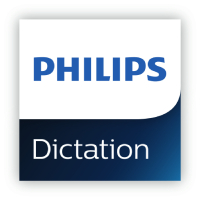 By Legal Futures Associate Philips Dictation
By Legal Futures Associate Philips Dictation
Freeware and open source characteristics
In some cases the terms freeware and open source are used interchangeably, however there are important differences. With freeware, the source code is usually not made available. So, whilst freeware software can be used free of charge, any modification, redistribution or other improvements often cannot be done without getting permission from the software’s author.
As an example, two of the most common types of freeware are Skype and Adobe Acrobat Reader. While both programs are free to use, their source codes are unavailable to the public. Many developers typically market freeware with the intention of encouraging users to buy a more capable version.
When it comes to open source software, the source code is freely available for anyone to manipulate. A non-profit organisation, the Open Source Initiative (OSI), supports the development of open source software. The body asserts that any open source software must allow for free redistribution and enable it to be modified and distributed in a different format from the original software.
Over the last few years open source has certainly come to the fore as a force within the business software community. In addition to the cost and source code attractions, open source has a number of other benefits, including:
- Peer reviewed to maintain its quality
- More frequent updates than with proprietary software
- Do not tie businesses to specific vendors
Potential concerns
As with many things in life, “a “free” service often comes with a number of strings attached. When it comes to speech recognition software, there are many “free” options out there. However, while these can certainly be useful for creating short text messages or emails, they have a number of drawbacks that make them unsuitable for the professional environments where speech to text solutions are commonly used. These include:
- Licencing concerns: When using open source solutions it can be difficult to establish if the software has code that was copied from another company, or if there are any restrictions on the licence attached to the software. It is vital to clearly understand any limitations the software developers may have placed on its use.
- Security issues: “Free” options often come with a number of security concerns. In particular the code is available to everyone, including hackers, which means in turn that any vulnerabilities are made public.
- Collaboration concerns: Freeware options typically don’t allow for the high level of shared, cloud-based access that is essential for collaborative working.
- Ease of use: Some open source applications may be tricky to set up and use. Others may lack user-friendly interfaces or features that your staff may be familiar with.
- No cursor-based dictation: Most free speech to text programs will only allow you to use speech to text inside a browser or their dedicated application. You will not be able to click, speak and see the text appear in any application. This may mean you will have to do a lot of copy and pasting.
- Low speech recognition accuracy: Most free speech to text engines will use outdated vocabulary databases, as costs are required to keep them up to date.
- Not available in your language: Many of the free speech to text solutions are available only in English. Sometimes, if other languages are included, the speech recognition quality may not be as high.
- Training requirements: Will training be required to equip everyone in your business with the new skills necessary to use the “free” solution? Moving to a new operating system, for instance, can be a major challenge if your workforce is used to an industry standard solution. You should, therefore, take account of the time and cost of any training that may be needed.
- Support issues: How is the application supported? Look at the development – and more importantly how the application is supported with technical assistance – to determine whether any issues your business subsequently has with the application will be easily resolved. One particular challenge with open source software can be the lack of customer support, with an online forum often being the only way to solve specific support issues.
So, for minor text creation requirements the freeware/open source options might well be adequate. However, for the more detailed and complex document creation requirements typically found in professional environments, where there is also a need to store documents securely and ensure compliance with legal requirements, the current range of “free” speech to text solutions are likely to come up short.










